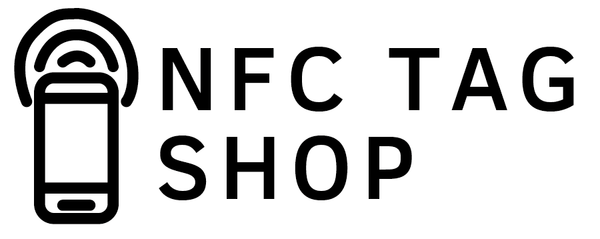What is NFC tag?
What Is an NFC Tag? A Beginner's Guide
Smart devices are becoming increasingly popular—and smarter by the day. As these devices evolve, so do the ways we interact with our surroundings. One key technology that enables such seamless interaction is NFC, or Near Field Communication.
What Is an NFC Tag?
NFC stands for Near Field Communication, a wireless technology that allows two devices to exchange data when they are brought into close proximity—usually within a few centimeters.
An NFC tag is a small chip that stores data and communicates with compatible devices such as smartphones, tablets, and laptops. By simply tapping or bringing your phone close to an NFC tag, you can trigger actions such as opening a webpage, connecting to Wi-Fi, or launching an app—no pairing, passwords, or setup required.
NFC is often compared to RFID (Radio Frequency Identification), but the two are different in purpose and function.
How NFC Tags Work
NFC tags operate wirelessly and passively—they don’t require a battery. Instead, they are powered by the electromagnetic field of the reading device (like a smartphone). When the two devices come into range, they communicate using a format known as NDEF (NFC Data Exchange Format).
Due to their short communication range (typically less than 10 cm), NFC interactions are:
-
Quick and secure
-
Intentional (you must bring the device close)
-
Resistant to accidental activation
Only one NFC tag can be read at a time by a device, reducing the risk of interference or unintended operations.
NFC vs. RFID: What's the Difference?
| Feature | NFC Tags | RFID Tags |
|---|---|---|
| Communication Range | Very short (typically <10 cm) | Can range from cm to meters |
| Communication Type | Two-way communication | One-way communication |
| Use Cases | Payments, access, sharing info | Inventory tracking, logistics |
| User Interaction | Requires deliberate proximity | Often automatic (long-range) |
In short:
🔹 RFID is great for tracking and automation
🔹 NFC is ideal for interaction and communication
Why NFC Is Useful for Business
✅ Instant Connectivity
Just a tap is all it takes. NFC enables quick connections for payments, check-ins, access control, digital tickets, and more.
✅ No Internet Required
NFC tags function without the need for Wi-Fi, 4G, or 5G connections. This makes them reliable even in offline environments such as subways, elevators, or rural areas.
✅ Secure and Standardized
NFC transactions are encrypted, and the technology is regulated by international standards such as ISO/IEC 14443 and JIS X6319-4. Its short range limits the potential for unauthorized remote access.
✅ Eco-Friendly and Cost-Effective
Many NFC tags are made from recyclable materials like paper, reducing plastic waste. Businesses can minimize their environmental footprint while offering modern, touchless solutions.
✅ Easy to Implement
NFC is low-cost, simple to deploy, and versatile. From digital business cards to gym memberships or hotel room keys, NFC enhances both customer and employee experiences.
Real-World Examples of NFC Usage
-
Retail: Contactless payments at point-of-sale terminals
-
Hospitality: Hotel key cards with NFC for door access
-
Events: Instant attendee check-ins or badge verification
-
Fitness: Membership access with just a smartphone tap
-
Marketing: Tap a poster or product to visit a website or get a coupon
In Summary
NFC tags are a smart, secure, and scalable solution for fast and intuitive data exchanges. Whether you're a consumer or a business owner, embracing NFC technology can simplify interactions, improve security, and open up new possibilities in a touchless, connected world.
